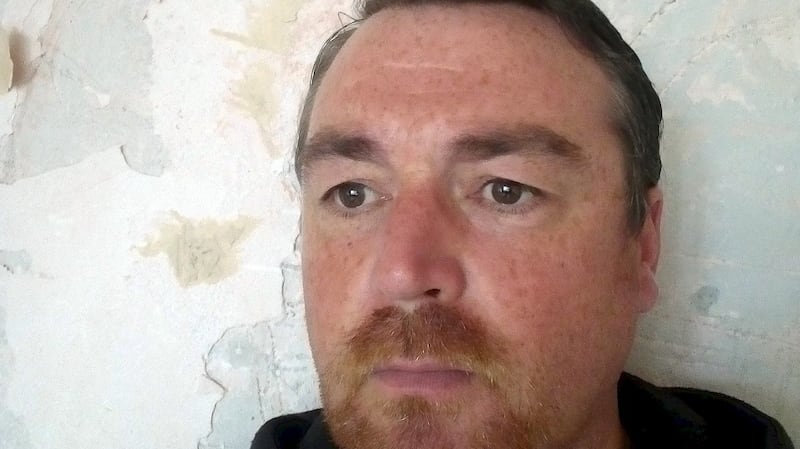What happens to taught programmes in a time of shutdown and travel restrictions? How can courses in the visual and performing arts, which are often manifested in very physical and practical ways, be delivered at a time of social distancing?
Glenn Loughran is a lecturer and programme chairman at the Dublin School of Creative Arts at TU Dublin. He runs a four-year modular honours degree programme in Visual Arts on Sherkin Island off the west coast of Cork and is experienced in the delivery of theoretical and practical lectures over the internet. He is also in the process of setting up a new MA in Art and the Environment which will be run from the island from September.
“We’ve been doing long-distance learning for a very long time and in a lot of rural communities there is quite a lot of it going on because of the challenges presented by distance and education. So when this hit we were quite well prepared,” he told The Irish Times.


“Without a doubt, the number one advantage of distance learning is that it can give access to education in rurally excluded or socially, economically disadvantaged communities,” he says.
Adapting to the Covid-19 landscape in a short timeframe as was done by third-level institutions in recent months would be a feat for any organisation. But for practical courses such as visual arts degrees, it presented a unique set of challenges.
“Because I am teaching visual art it is much trickier because quite a lot of it is practical,” says Loughran.
“The real challenge is assessing work because in terms of art-making or creative work, you are used to being in front of it so we’ve had to be creative.”
The pandemic has caused huge disruption across the world and the education sector has been affected with the near-total closures of schools, universities and colleges.
Third-level institutions had to re-evaluate their teaching methods and for many courses this meant fundamental changes to how the curriculum was delivered and how students were assessed.
“A new way of assessing student projects was required as the lockdown meant students could not submit their work in the normal way,” says Loughran.
“How can you possibly assess something that you are not seeing physically?”
While not being able to physically examine the work might seem to be a major setback for some, for Loughran it simply meant adopting a different creative approach.
“Students were asked to create a video essay detailing the work they created in their own environment which allowed them to analyse and represent their work for assessment.”
The technology used on the course also affords instructors the ability to scrutinise the work closely – even if they are in a different geographic location.
Using an application called Padlet, which is a type of digital sketchbook, students can build up a store of ideas in various formats from images to video, pictures and text.
“You’ll never completely replicate the materiality of anything you make and reproduce. It will never be 100 per cent but you can come up with creative strategies that allow you to frame the work in an interpretive way,” says Loughran.
“I can zoom in to the drawings and the paintings. I can zoom in so close that I can see the texture, I can even see where the oil is seeping. You can do that.”
He has come up with other strategies to address the limitations presented by the pandemic by asking his students to film their work. They then analyse it before submitting it for review which brings another interpretive format for him to assess.
Creativity
From people singing from the balconies of locked-down Milan to the creation of innovative and comic internet memes, the coronavirus outbreak has highlighted just how important art is to our lives. Loughran is not surprised at this surge in creativity and sees it as a way of overcoming limitations.
“Creativity often comes from limitations. Students are very used to being given briefs that have limitations and then having to come up with a response to it,” he says.
“There is a creativity boom within this crisis because you have to do something with the situation, otherwise it brings you down. You need a lot of creative problem-solving as well. You are constantly faced with barriers and limitations, and I think that creativity is the way that you negotiate that.”
One example of this is the course’s end-of-year exhibition. Most fine art degree programmes hold an exhibition at the end of the course where students display their work publicly.
“On Sherkin Island this is a really big exhibition but because of coronavirus it is very tricky. One of the things that we are doing is that we are working with a dance choreographer to see if he can come up with strategies to choreograph the show and its relationship to the islanders and to the public.
“It is one really creative way to figure out how they can still have a show.”
Challenges of distance learning
One of the main challenges presented by distance learning, according to Loughran, is that when the teacher is taken out of the classroom, a particular type of technology is also removed.
“A teacher teaches with their hands and their eyes and they really embody their knowledge. One of the first things teachers notice whenever they are doing online teaching is how that goes.
“You can’t read your students. If we are in an online classroom and you have 20 students and you can’t really see their eyes, you don’t know if what you said went in or whether it didn’t or whether you should go back and try it again.
“I think teachers find that very challenging because the way they embody their knowledge is really what separates them from robots giving out information.
“They communicate that the work is valuable and important for the student and then the student is motivated by that. I’ve seen teachers working online and this has proven to be very challenging as they can’t communicate through the normal performance of teaching.”
Teaching, he says, is “a very complex activity and it gets flattened out through these kinds of processes”.
“There’s a big debate about automation coming into the classroom and people often feel very threatened by it. Sometimes some of the discussion around it is very technophobic but there are some real questions about it as well.
“One of the biggest issues is that it reduces all knowledge to information and it loses that other dimension which is the professional transmission of knowledge that gives it meaning.
“The other side of it is that often times we expect technology to solve all of the problems of teaching and it never will. We still have to rely on content and professionalism and practice and so on.”
Digital
“Because it is a long-distance course, the digital aspect is really important so you do play about with different possibilities. For example, the MA course we are setting up on art and the environment in September, a part of that is going to be taught using Oculus Rift [a virtual reality headset].
“Each student, at the beginning of the Master’s, will be given one of these VR headsets for the duration of the course. We will build a virtual learning environment in there for them all to join in. This is at the real edge of this now.
“Technically what will happen is that we will have 10 students in different parts of the country, on different islands, entering into a space where they engage together in these virtual environments. It is really exciting.”
While the technology is exciting and contributes to the creative process, Loughran sees it as a tool and not as an end in itself.
“I’m excited by the technologies but I don’t think they should ever stand alone, I don’t think they should ever replace a teacher or an environment but they can definitely help.
“It’s kind of like a dialogue and I think if you can keep the dialogue going between the actual and the virtual, then I think it can work. I think if it is too much of the virtual, then that can be a bit too alienating, especially in visual arts where there is a lot of hands-on making.”
Best tip
“Probably the best tip is to set up a peer study support group outside the class. My students all meet outside the course either to discuss the brief, what the classes were about or where things are going. It’s very informal, it’s whatever they want it to be but it is very important for peer support but also working through anything that might have been missed in communication. There can be a little bit of communication slippage online. They can work on that stuff and they’ll sometimes come back to me with questions. I think that’s a really good support for mental health and academic motivation.”













